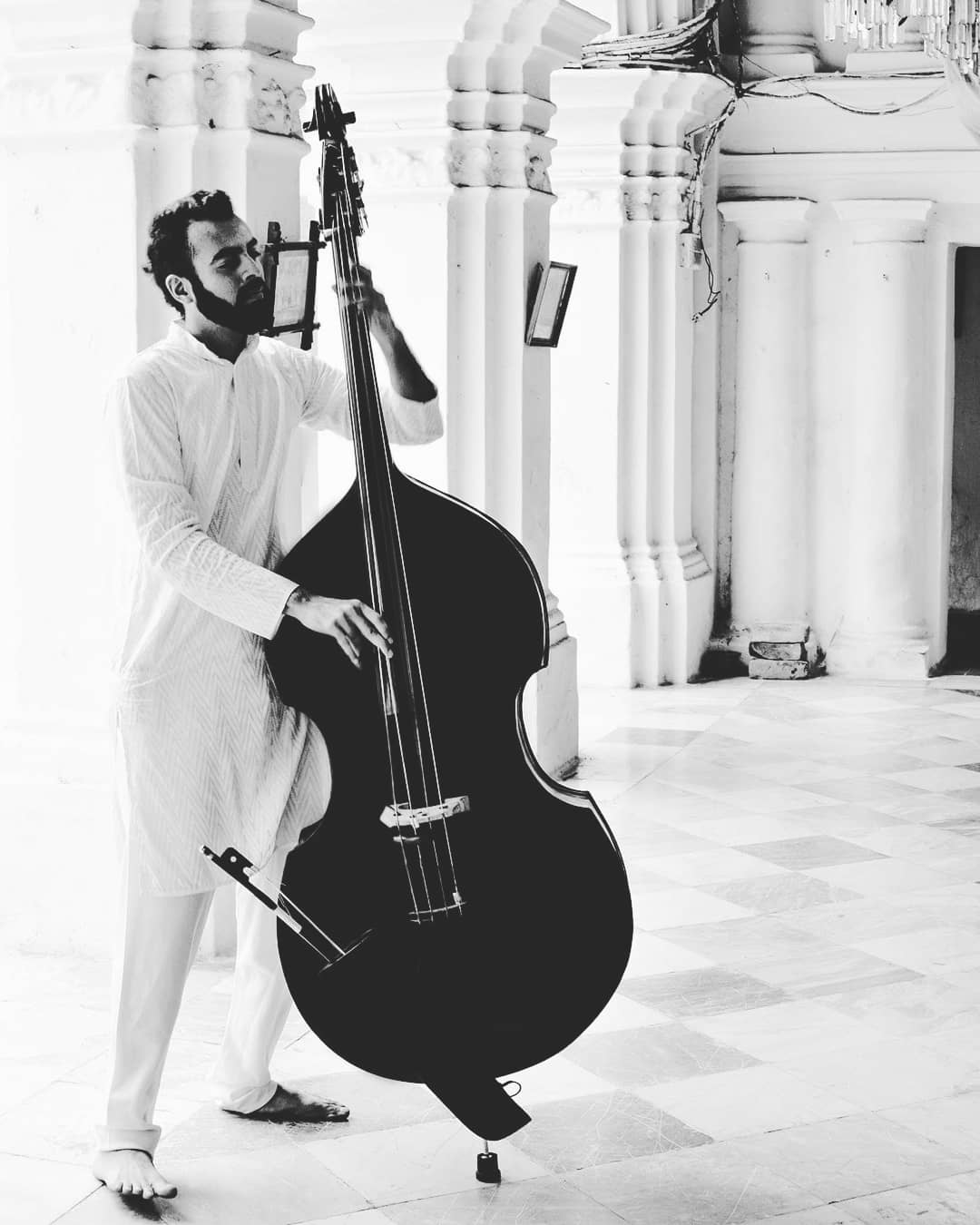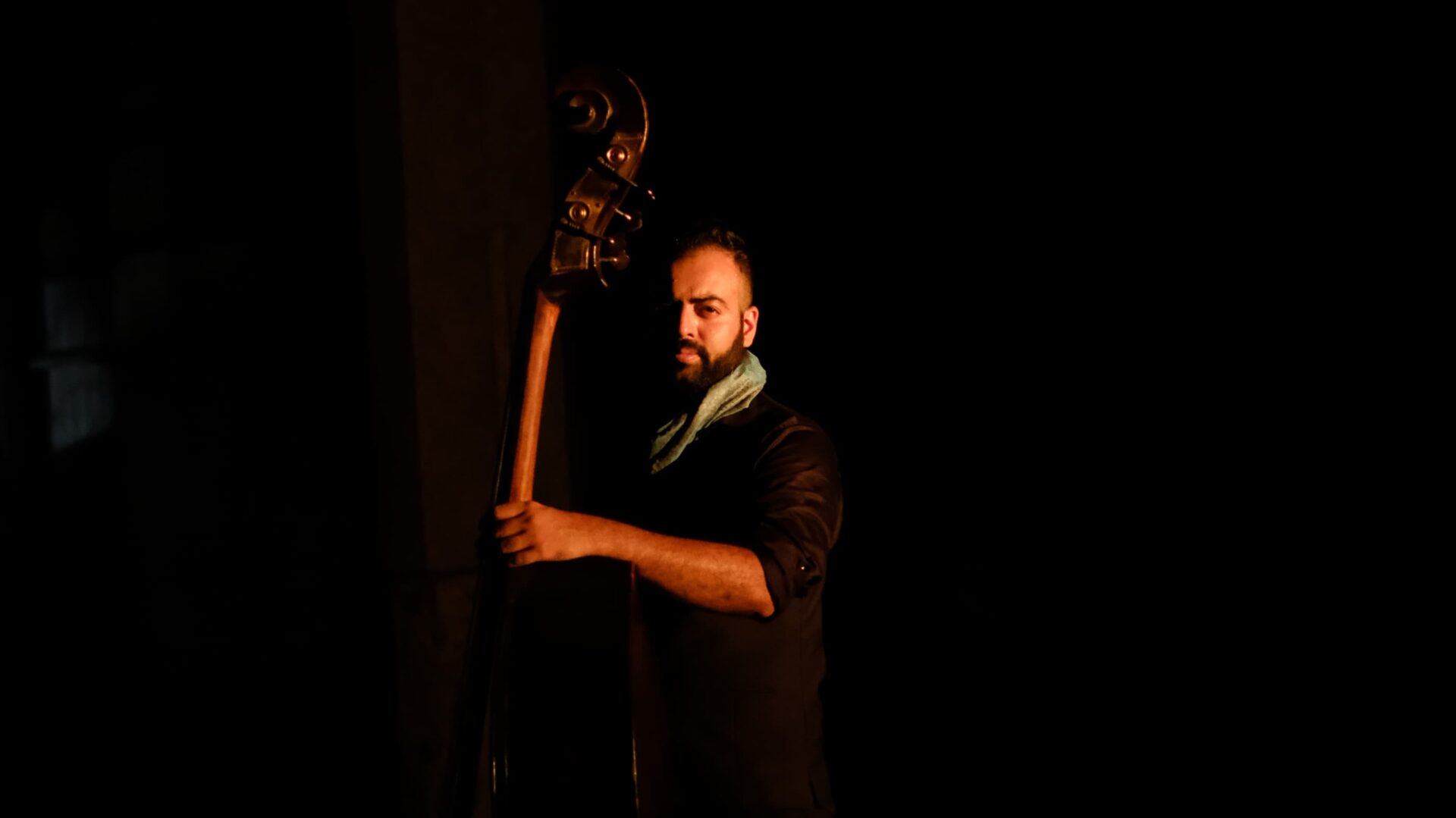
About Debjit
Debjit Mahalanobis is a pioneering double bassist from India, known for his performances with national and international symphony orchestras, in movies and on television. Hailing from a lineage, including the scientist P.C. Mahalanobis and musician Pt. Ramshankar Bhattacharya of the Bishnupur gharana, he combines tradition with innovation in his aproach to playing the double bass.
He has performed with prestigious orchestras such as the Indian National Youth Orchestra, the Bombay Chamber, the Bangalore City Chamber, the Indo-European Chamber, the Kolkata Symphony, and the South Asian Symphony Orchestra. His television appearances include Zee Sa Re Ga Ma and Star Super Singer, along with contributions to both mainstream and art-house cinema.
In 2020, Sangeet Kala Mandir premiered “Double Bass India,” an online concert centered around his compositions. He received the Chidakash Yuva Samman Award in 2021, supported by the Ministry of Culture, for contributions to popularizing the double bass in India.
His music for the film “Megha” (2018) was well-received, earning the Best Student Film award at the Mumbai International Film Festival in 2022. Recent works include compositions for The Art of Living’s Navratri Festival “Kala Arpan”, the Favoriten Festival in Dortmund, Germany and for Meta’s sound bank, USA.
Currently, he is working on an album with sitarist Snehesh Nag titled “Double Bass Meets the Sitar” and collaborating with bohurupi artists from Birbhum for his solo project. He continues to expand his musical horizons, studying Dhrupad under Rudraveena maestro Ustad Bahauddin Dagar.




